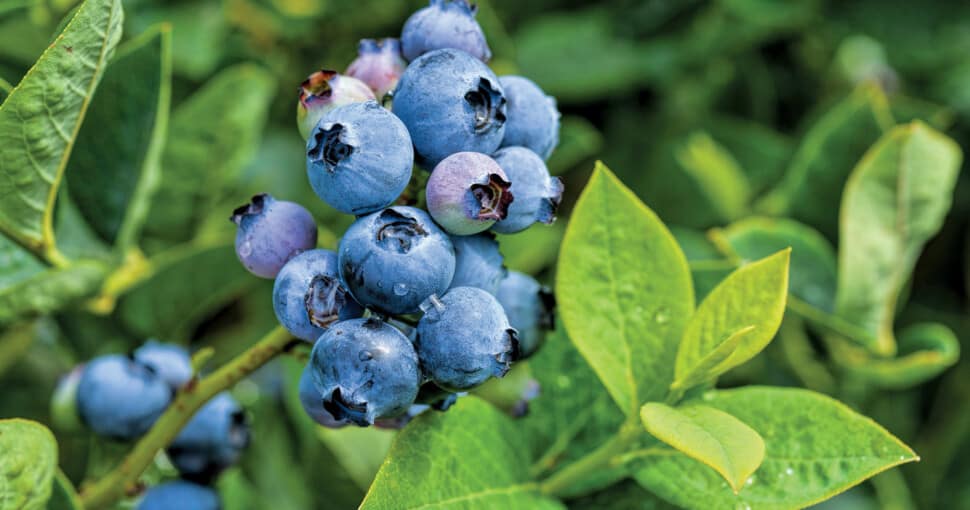Blueberries (Vaccinium spp.) are popular berries worldwide. They are eaten fresh or used in baking to make sauces, jams, and desserts. Blueberries are easily recognized by their purplish-blue color and round shape, almost like marbles.
Contents
- 1. Wintergreen (Gaultheria procumbens)
- 2. Huckleberry (Gaylussacia spp.)
- 3. Nightshade (Solanum ptycanthum)
- 4. Kinnikinnick (Arctostaphylos uva-ursi)
- 5. Salal (Gaultheria shallon)
- 6. Poke Berries (Phytolacca)
- 7. Bilberries (Vaccinium myrtillus)
- 8. Serviceberries (Amelanchier)
- 9. Buckthorn (Rhamnus cathartica)
Blueberries grow on a bush, and the size of the bush differs greatly depending on the variety. A blueberry bush has dark green leaves. The leaves have a round shape and pointed ends. Although blueberries are extremely common worldwide, many other berries are easily mistaken for them.
Some of these berries are also edible and delicious, while others grow on bushes similar to blueberries but have poisonous fruit. Some plants easily mistaken for the blueberry bush include:
- Wintergreen – the bush resembles a blueberry bush in summer
- Huckleberry – the bush and berries look exactly like blueberries
- Nightshade – the bush and berries look like blueberries
- Kinnikinnick – the leaves and flowers resemble blueberries
- Salal – the leaves, flowers, and fruit resemble blueberries
- Poke berries – the berries look somewhat like blueberries
- Bilberries – the berries resemble blueberries
- Serviceberries – the berries look like blueberries
- Buckthorn – the bush and fruit look like blueberries
Although some of these berries are edible and delicious, others are potentially poisonous. For those interested to learn more about blueberry lookalikes, stick around!
Also read: When Are Blueberries In Season?
1. Wintergreen (Gaultheria procumbens)
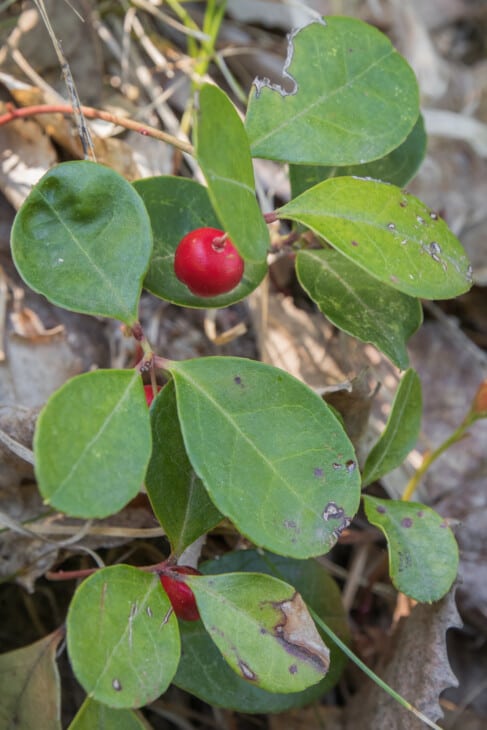
Most people know wintergreen as the minty substance used in creams and sprays to treat muscle pain. But wintergreen bushes also produce edible berries with a remarkable similarity to blueberries. A wintergreen bush is roughly the same height as a blueberry bush, and the leaves and flowers look similar.
It’s easy to mistake a wintergreen bush for a blueberry plant in summer, but in winter, it’s another story. Wintergreen bushes turn from green or orange and red in winter. They also produce red fruits with the same shape and size as blueberries.
Wintergreen berries are edible. They have a sweet taste and wintergreen that reminds you of wintergreen ointment.
2. Huckleberry (Gaylussacia spp.)
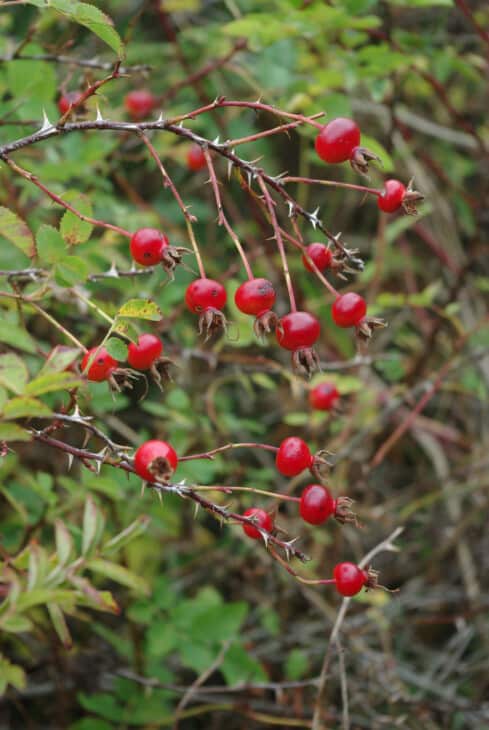
Huckleberries are also often known as wild blueberries. It’s no surprise that the name indicates the plant, and the berries look like blueberries. Huckleberries are versatile, and their location determines the color of the berries.
For example, in coastal areas, the berries have a red hue, while they’re blue or purple when growing in mountainous areas. The huckleberry bush has the same structure, leaf shape, and flowers as blueberries, which is why it is so easy to mistake one for the other.
Fortunately, huckleberries are edible and tend to be sweeter than blueberries when consumed raw. So, huckleberry bushes are a welcome mistake for blueberries in the wild.
3. Nightshade (Solanum ptycanthum)
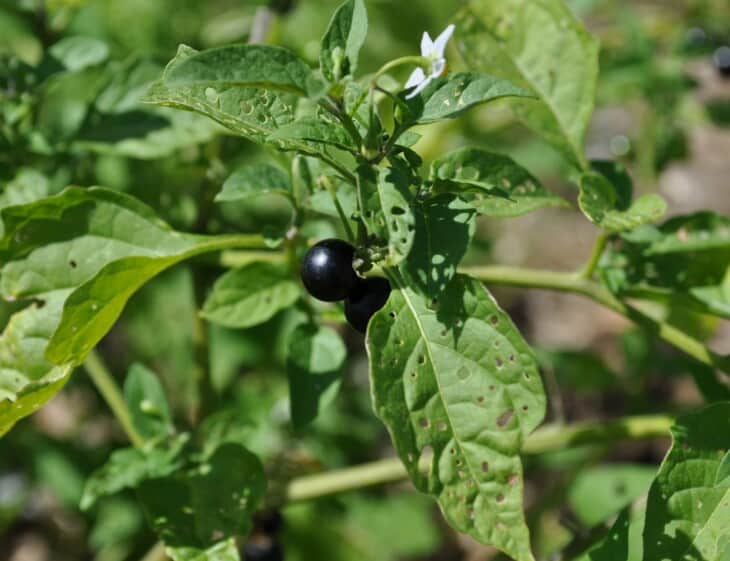
Yet another berry that resembles blueberries are nightshade berries. Nightshade berries resemble blueberries in terms of size and shape. However, nightshade berries don’t have white powder on their surface, and they also don’t have the same crown as a blueberry.
Nightshades also grow on different plants. They grow on light-colored green stems. The plants have big, jagged-edged leaves; overall, the plant is much smaller than the average blueberry bush. The most important difference between nightshade berries and blueberries is that nightshades are toxic.
The berries are toxic when unripe, and some varieties are still toxic even when ripe. All parts of the plant are also poisonous, so it’s safer to avoid these plants altogether.
4. Kinnikinnick (Arctostaphylos uva-ursi)
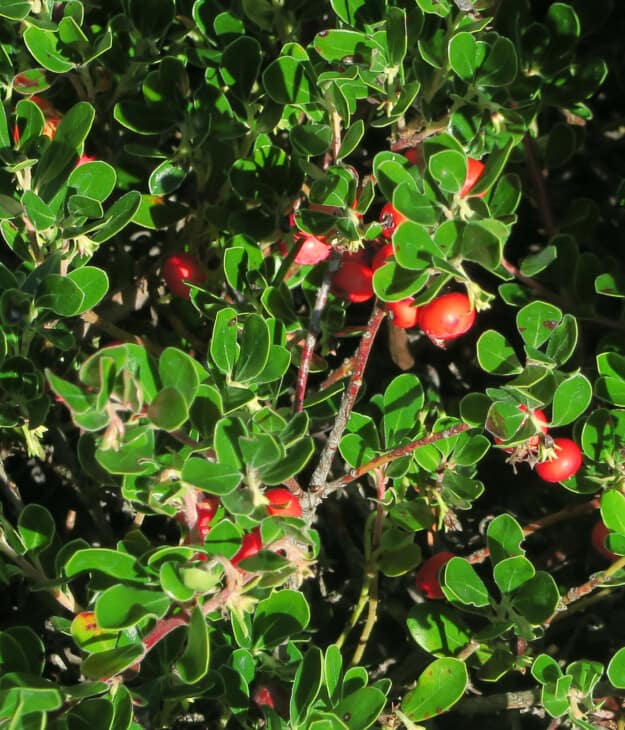
Kinnikinnick plants also resemble blueberries in some manners. These bushes are native to America and grow in many parts of the country. Kinnikinnick bushes are often used as ground covers, and their leaves and flowers resemble blueberry bushes.
However, kinnikinnick bushes produce bright red berries with the same shape as blueberries. While edible, these berries are rather tasteless and are rarely eaten. Some people use them for syrups and jams. Many people use kinnikinnick bushes as ground cover and to attract birds to their gardens.
5. Salal (Gaultheria shallon)
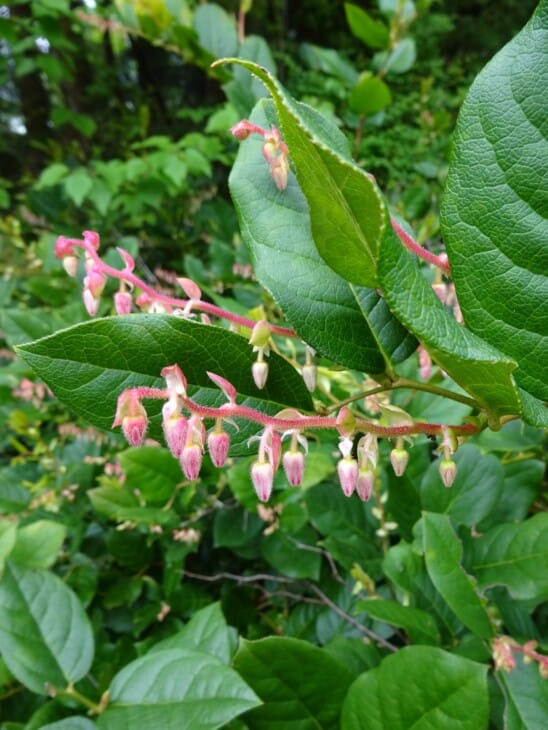
Salal bushes also produce blueberry-like fruits. These bushes are native to America and can grow up to 10 feet tall (the same as some blueberry varieties). Salal bushes have bigger and glossier leaves than blueberries, but they resemble these plants at first glance.
Some salal varieties also come in ground covers, making the plants look even less like blueberries. But the fruits resemble blueberries in their shape and color. They do have the same taste, though, and are rather bland when eaten raw. As a result, Salal berries are rarely consumed, even though they are edible.
Even though there are differences between salal bushes and blueberry bushes, people often mistake these two for each other when roaming around the forest.
6. Poke Berries (Phytolacca)
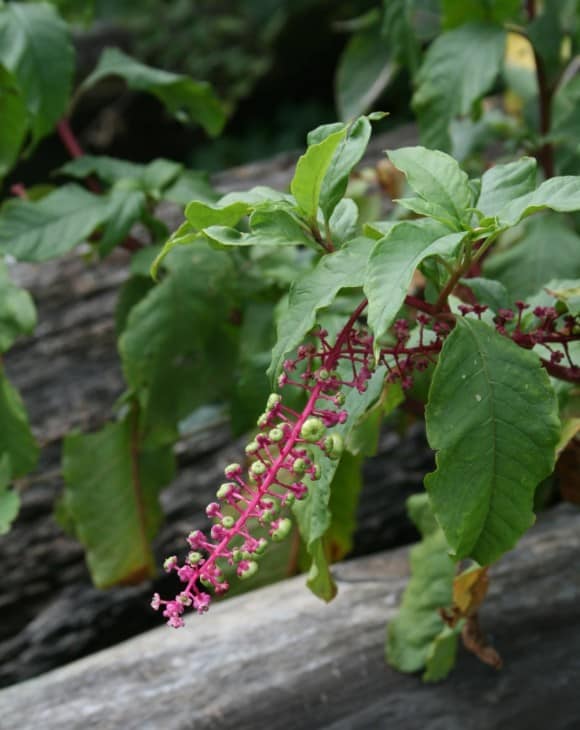
Poke berries resemble blueberries or even grapes in some cases. Poke berries have the same color, shape, and texture as blueberries. So, if you find loose pokeberries, you may mistake them for blueberries. But pokeberries grow in clusters like grapes, which is why some people mistake them for a grape variety.
Poke berries grow on bushes with red stems. These stems are meant as a warning since poke berries are poisonous to humans and animals. Unripe and ripe poke berries are toxic, so avoid eating them altogether. Even though the fruit may look like blueberries, the plant is different enough to easily tell them apart.
7. Bilberries (Vaccinium myrtillus)
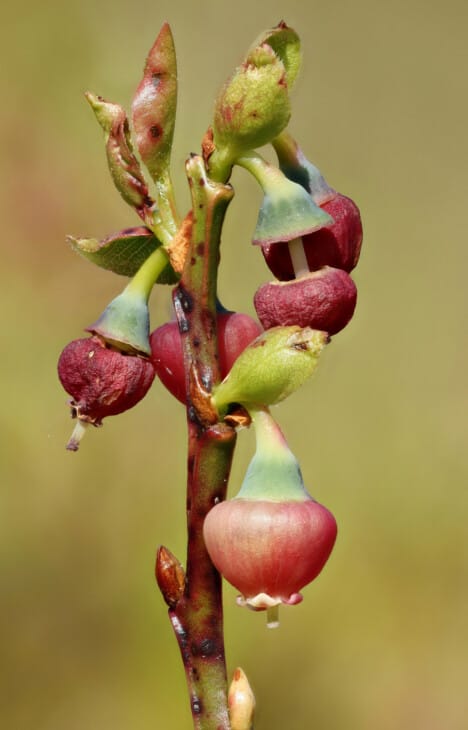
Bilberries, also known as European blueberries, have a remarkable resemblance to blueberries. These berries are slightly smaller than blueberries and have a sweeter and tangier taste. Bilberries grow on low shrubs that resemble some blueberry varieties.
The shrubs have similar leaves and flowers to a blueberry shrub, making it easy to mistake one plant for another. Bilberries are found throughout North America, and these delicious berries are edible and nutritious.
Apart from the size of the berries, there isn’t much that separates a bilberry from a blueberry. Bilberries are often used for ground cover; their fruit is eaten fresh, dried, or used to make jams.
8. Serviceberries (Amelanchier)
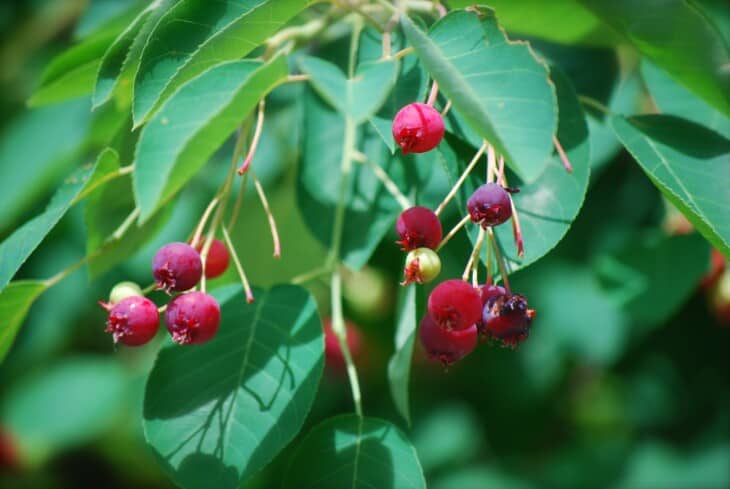
Serviceberry trees also resemble some varieties of blueberries. Serviceberry plants come in shrub and tree forms depending on the variety. Their large blue berries are easily mistaken for blueberries. Serviceberry trees are found throughout North America, and their shape and size remind one of the blueberries.
The fruit is slightly larger, and the taste of a serviceberry is different from a blueberry. Serviceberries taste like a mix of blueberries and almonds, a surprisingly enjoyable flavor. Serviceberries are edible and delicious, and the plants are often grown for their berries.
The serviceberry plant resembles a blueberry bush, but the leaves are jagged-edged and lighter in color.
9. Buckthorn (Rhamnus cathartica)
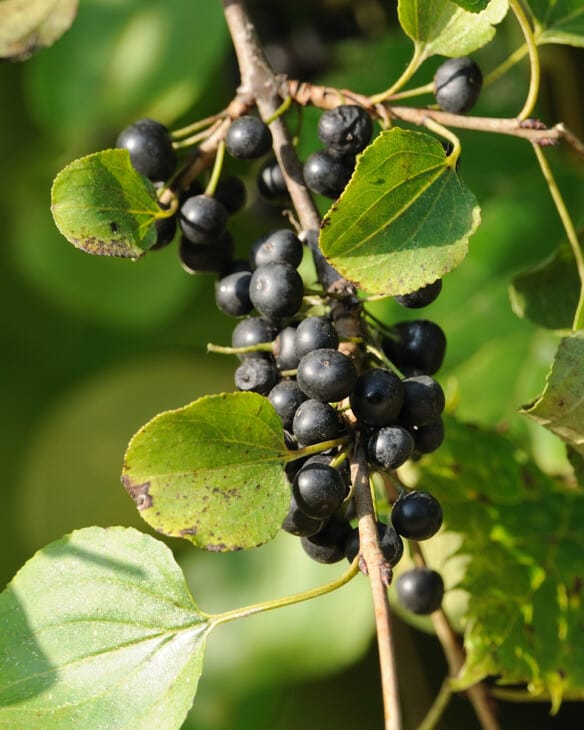
Buckthorn bushes are native to Europe but can also be found in many parts of North America. These bushes can grow up to 20 feet tall and have sharp spines to deter animals from eating them. Buckthorn bushes produce berries with a striking resemblance to blueberries.
They have the same shape and size. However, buckthorn berries lack the white, powdery coating of blueberries. Buckthorn berries aren’t as sweet as blueberries and have a mildly toxic effect. They aren’t as poisonous as other berries, like nightshade berries, however, and you’ll likely experience some stomach issues after eating them.
Buckthorn bushes are easily mistaken for blueberry shrubs, especially when carrying fruit. Still, there are enough differences between the plants to tell them apart from each other upon closer inspection.

